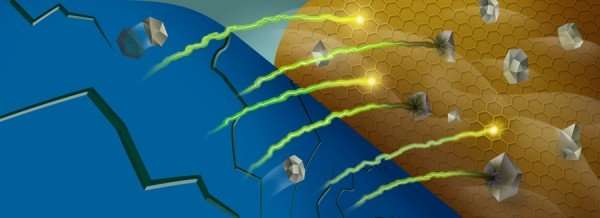Scientists identify chemical causes of battery 'capacity fade'

Like you, me and everyone we know, batteries have a finite lifespan.
When a battery enters "old age," scientists refer to its diminished performance as "capacity fade," in which the amount of charge a battery can supply decreases with repeated use. Capacity fade is the reason why a cell phone battery that used to last a whole day will, after a couple of years, last perhaps only a few hours.
But what if scientists could reduce this capacity fade, allowing batteries to age more gracefully?
"Now that we know the mechanisms behind the trapping of lithium ions and the capacity fade, we can find methods to solve the problem."
Researchers at the U.S. Department of Energy's (DOE) Argonne National Laboratory identified one of the major culprits in capacity fade of high-energy lithium-ion batteries in a paper published in The Journal of the Electrochemical Society.
For a lithium-ion battery – the kind that we use in laptops, smartphones, and plug-in hybrid electric vehicles – the capacity of the battery is tied directly to the amount of lithium ions that can be shuttled back and forth between the two terminals of the battery as it is charged and discharged.
This shuttling is enabled by certain transition metal ions, which change oxidation states as lithium ions move in and out of the cathode. However, as the battery is cycled, some of these ions – most notably manganese – get stripped out of the cathode material and end up at the battery's anode.
Once near the anode, these metal ions interact with a region of the battery called the solid-electrolyte interphase, which forms because of reactions between the highly reactive anode and the liquid electrolyte that carries the lithium ions back and forth. For every electrolyte molecule that reacts and becomes decomposed in a process called reduction, a lithium ion becomes trapped in the interphase. As more and more lithium gets trapped, the capacity of the battery diminishes.
Some molecules in this interphase are incompletely reduced, meaning that they can accept more electrons and tie up even more lithium ions. These molecules are like tinder, awaiting a spark.
When the manganese ions become deposited into this interphase they act like a spark igniting the tinder: these ions are efficient at catalyzing reactions with the incompletely reduced molecules, trapping more lithium ions in the process.
"There's a strict correlation between the amount of manganese that makes its way to the anode and the amount of lithium that gets trapped," said study coauthor and Argonne scientist Daniel Abraham. "Now that we know the mechanisms behind the trapping of lithium ions and the capacity fade, we can find methods to solve the problem."
More information: James A. Gilbert et al. Transition Metal Dissolution, Ion Migration, Electrocatalytic Reduction and Capacity Loss in Lithium-Ion Full Cells, Journal of The Electrochemical Society (2017). DOI: 10.1149/2.1111702jes
Provided by Argonne National Laboratory





















